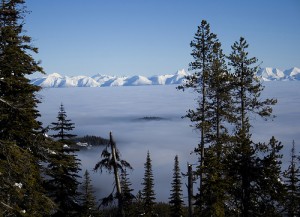New evidence indicates glaciers present 11,000 years later than believed
Research led by a scientist from the University of Exeter has shown that Britain was home to small glaciers within the last few centuries – around 11,000 years later than previously thought.
Dr Stephan Harrison of Geography has established that small glaciers almost certainly existed in the Cairngorm mountain range in Scotland as recently as the 18th century, contrary to the long held belief that Britain’s last glaciers melted around the 9th millennium BC.
Scientists had speculated that glaciers may have formed in the Highlands around the time of the ‘Little Ice Age’ – a period of cooling roughly defined as taking place between the 16th and 19th centuries – but hard evidence has proved elusive.

Image credit: Katie Brady (Source: Flickr)
Dr Harrison and colleagues from Plymouth University, the Universities of Aberystwyth and Witswatersrand and the Idaho National Laboratory used a numerical glacier-climate model to simulate Little Ice Age climate in the Cairngorms, allowing them to calculate how much cooler and snowier the winter weather must have been to cause glaciers to form.
Their models show that small glaciers would have been created in the corries – steep-sided hollows found in the Scottish mountains – by a cooling of air temperatures by 1.5°C and precipitation increasing by ten per cent. This is consistent with conditions that existed during the Little Ice Age.
Dr Harrison said: “Our findings show that the Cairngorm mountains were probably home to a number of small glaciers during the last few hundred years – around 11,000 years later than previous evidence has suggested. It may be that such glaciers also existed in the Scottish Highlands and elsewhere during other cold periods after the main ice sheets had disappeared.
“Present climate warming means there is little chance of a return of glacier ice to the Highlands for the foreseeable future.”
Dr Harrison’s discovery is backed up by a parallel study by Dr Martin Kirkbride at the University of Dundee, who used a technique called cosmogenic dating to show that a small glacier in a Cairngorm corrie piled up granite boulders to form ridges within the last few centuries.
Dr Kirkbride said: “Our laboratory dating indicates that the moraines were formed within the last couple of thousand years, which shows that a Scottish glacier existed more recently than we had previously thought.
“The climate of the last few millennia was at its most severe between 1650 and 1790. There are some anecdotal reports from that time of snow covering some of the mountain tops year-round. What we have now is the scientific evidence that there was indeed a glacier.”
Dr Kirkbride teamed up with Dr Jez Everest at the British Geological Survey in Edinburgh, and the Cosmogenic Isotope Analysis Facility at the Scottish Universities Environmental Reactor Centre in East Kilbride, to carry out the research.
The dating technique estimates the time since quartz crystals in granite boulders were exposed at the Earth’s surface, based on measuring the concentration of beryllium-10 isotopes which form when the rock surface is bombarded by cosmic rays from deep space.
Both studies are published in the latest issue of the journal The Holocene.
*Source: University of Exeter
